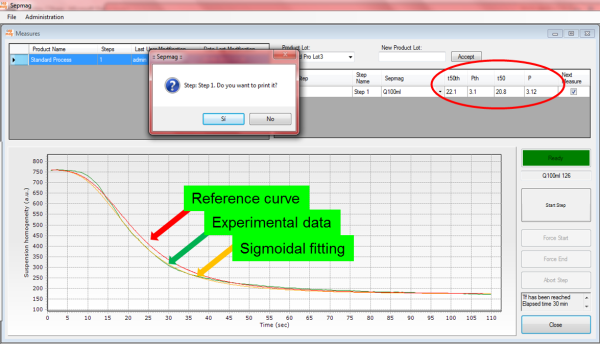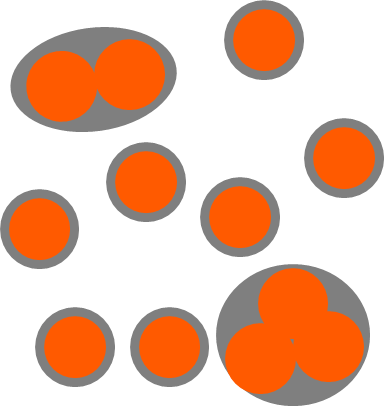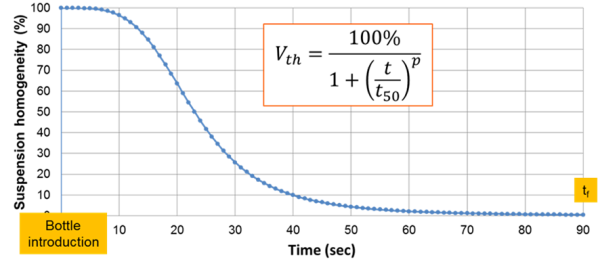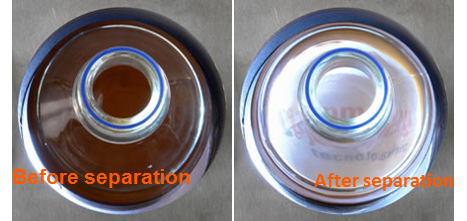Flow cytometry interpretation can be challenging, particularly when conducting multiparametric analyses that typically create a large quantity of data points. Fluorescent activated cell sorting (FACS), a derivative of flow cytometry, has become an essential tool for modern life science and biomedical laboratories. It is one of two main methods for cell sorting, alongside magnetic bead separation. FACS is a method for rapidly analyzing cells based on multiple criteria simultaneously, and then physically sorting them based on this analysis. The results of the process are usually represented by dot plots: two or three-dimensional scatter plots, or sometimes a histogram. However, these plots can be tricky to interpret, so here are a few tips to help get you started.

Quality Control is one of the key issues at IVD-kits manufacturing. To assure the lot-to-lot consistency is critical to have consistent results when the reagents are used in the analyzers. To decide where to place the quality Control points is one of the more critical decisions, with large repercussion in the kits manufacturing costs. A single control point at the end of the process implies that a ‘no-pass’ result would force the whole batch to discard, wasting all the time and resources invested on it. Having too many QC along the different process steps would greatly increase the costs, as tests usually involve intensive labor and/or expensive analysis techniques.
For CLIA IVD-kits manufacturing (or any products involving magnetic beads), we can take advantage of the biomagnetic separation process itself to check the magnetic beads behavior. As usually there are many separation steps (several washing before and after each conjugation), having them optically monitored provide inexpensive QC points along the whole process.
If you want to know everything about monitoring biomagnetic separation processes in real time, download our free guide about this topic:
The dynamics of the magnetic beads are very different when the beads are well re-suspended and when clumps are formed. Basically, if you have clumps, the magnetic separation is equivalent to having beads of larger diameter and the process is faster. Unfortunately, the usual SOP (Standard Operation Procedures) only checks visually if the separation is complete at the defined separation time. Even if the clumps accelerate the separation time,it would be impossible to detect by eye-sight at the final specified time, as both suspensions would be crystal clear.
Taking advantage of advanced biomagnetic separation
By recording the transmitted light across the vessel, we can monitor the transparency changes during the separation process, showing the described sigmoidal-like behavior. As shown in the figure (real case), using the same suspension in the same SEPMAG® Q1L, the time is reduced by almost a 30% when beads have become aggregated due to a bad storage protocol.

When manufacturing CLIA IVD-kits, one of the main problems during the successive steps (coating, washing...) is the formation of irreversible aggregates, usually due to the excessive magnetic retention force during the separation process. If the magnetic beads are not well re-suspended, clumps are formed and not all the surface is exposed. This leads to inhomogeneity in the coating if the problem appears in earlier manufacturing steps or in larger variability on the reagent reactivity if it happens in the latest. Clumps are also a big problem in magnetic beads analytical uses, as protein purification for screening, or any other application where the final product need to be aliquot in small volumes.
As discussed in previous eBooks, the first action should always be minimizing the risk of irreversible aggregation by using the right magnetic retention force. To avoid trade-offs between losses (or long separation time) and clumps formation, homogenous biomagnetic separation conditions is the best options, as it will increase the force far from the retention area –thus accelerating separation- without need of excessively high values at it.
However, even if the problem is theoretically eliminated by using advanced Biomagnetic separation systems, the existence or not of ‘clumps’ should be experimentally verified. The classical way is to check the RLU (Relative Luminescence Units) variability of the test after finishing all the manufacturing steps. The already discussed alternative (or complementary) way is to monitor each biomagnetic separation step by itself.
If you want to know everything about monitoring biomagnetic separation processes in real time, download our free guide about this topic:
Validation of re-suspension protocols with monitoring tools
The biomagnetic separation monitoring tools can been used to validate re-suspension protocols.One example is the experiment we did to show that small diameter Anti-mouse IgG magnetic beads can be used with SEPMAG® Biomagnetic Separation Systems without the need of any sonication step. Avoiding the use of ultrasound iskeyto simplify the scaling up of the process beyond the milliliters volume.
To check if the protocol generates clumps, the same suspension was separated, then re-suspended just by agitation, and then separated again, up to a total of 10 separation/suspension cycles.The SEPMAG® had a carefully chosen homogenous magnetic force which makes the separation fast, andsimultaneously claims that the value is gentle enough to avoid clump formation. The recorded optical curve does not show changes. The monitoring process demonstrated the feasibility of the re-suspension protocol without the sonication method for this magnetic beads and magnetic separation rack.

Validation is a mandatory requirement at IVD-kits manufacturing. The lot-to-lot consistency is critical to assure consistent results when the reagents are used in the analyzers. The key to have an efficient and cost-effective QC protocol would be having the right number of test points, and whatever possible, use existing techniques not requiring intensive use of manpower.
Advanced Biomagnetic Separation systems have recently incorporated monitoring systems to record the suspension transparency changes. By recording the transmitted light across the vessel, we can monitor the transparency changes during the whole separation process. The resultant curves give a quantitative value of the transparency at the end of the process, and also show how it changes since the vessel is introduced in the magnetic separation rack.
Any change of the properties of the magnetic beads (diameter, magnetic charge), the buffer (viscosity, ionicity, beads concentration) would affect the separation behavior. Any deviation from the expected curve can be used as an alarm. It would allow stopping the batch before incurring in additional costs and/or make the corrective actions when possible.
If you want to know everything about monitoring biomagnetic separation processes in real time, download our free guide about this topic:
The importance of having well-defined conditions
If the Biomagnetic Separation System has well-defined conditions (i.e. homogenous force), the recorded curves will not only indicate that something is wrong, but also help identify the specific problem. When using a constant magnetic force in all the working volumes, the opacity versus time curve typically hasa sigmoidal shape. The curve can be parameterized just by the two values that define this curve: the exponent p and the time t50.The first reflects the ‘steepness’ of the curve and the second reflects the time it takes to reach 50% of the difference between the maximum and minimal opacity. These two parameters change on a different way depending on what different magnetic bead (diameter, % magnetic content, magnetic material) or the suspension (buffer viscosity, beads concentration, ionicity) characteristics vary.
On a typical example, the changes in the concentration would affect the curves modifying both the exponent p and the t50. The biomagnetic separation is a cooperative behavior where the beads interact between them through magnetic dipolar interaction (overcoming the thermal agitation). The higher the concentration the nearer the magnetic beads would be to the nearest neighbor. As a consequence, diluting the sample slows down the separation. This behavior is reflected in the transparency changes by a lower is p (the curve is less ‘stepper’) and a higher t50 (slower separation) for diluted samples when compared with the original suspension.

The validation of each single production batch is a mandatory requirement at IVD-kits manufacturing. The lot-to-lot consistency is critical to assure consistent results when the reagents are used in the analyzers.
Since many steps are involved in the production process, the placement of Quality Control points is one of the more critical decisions, with large repercussion in the kits manufacturing costs. A single control point at the end of the process may seem cheap, but it implies that a ‘no-pass’ result would force the whole batch to discard, wasting all the time and resources invested on it. The other solution, having many QC along the different process steps would greatly increase the costs, as tests usually involve intensive labor and/or expensive analysis techniques. The key to have an efficient and cost effective QC protocol would be having the right number of test points, and whatever possible, use existing techniques not requiring intensive use of manpower.
For CLIA IVD-kits manufacturing (or any products involving magnetic beads), we can take advantage of the biomagnetic separation process itself to check the magnetic beads behavior. As usually there aremany separation steps (several washing before and after each conjugation),havingthem monitored provide inexpensive QC points along the whole process.
If you want to know everything about monitoring biomagnetic separation processes in real time, download our free guide about this topic:
To do it, however, we should update the way that Biomagnetic separation steps are usually validated. In many cases, these processes are validated solely by separation time. The technician checks by eye-sight the transparency of the suspension after the defined separation times, and if he/she found it OK, signs the form. No information about how the process has run is recorded. This single end-of time point control limits the possibility of audits if problems are detected in later steps.
To address this issue, Advanced Biomagnetic Separation systems have recently incorporated monitoring systems to record the suspension transparency changes. By recording the transmitted light across the vessel, we can monitor the transparency changes during the whole separation process. The resultant curves give a quantitativevalue of the transparency at the end of the process, and also show how it changes since the vessel is introduced in the magnetic separation rack. Properly recorded, these graphs would allow comparing the successive batches, and generating references curves.



